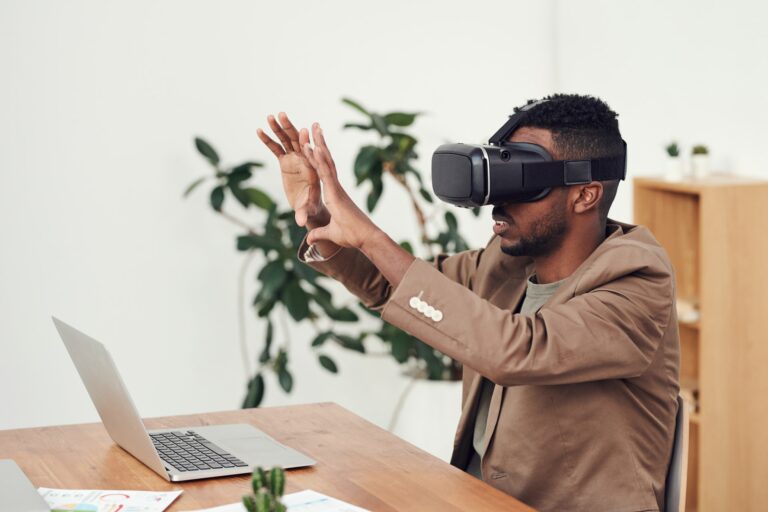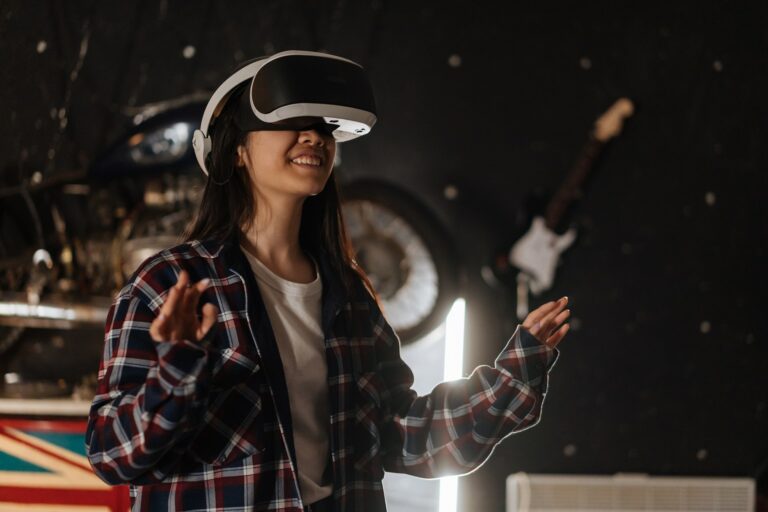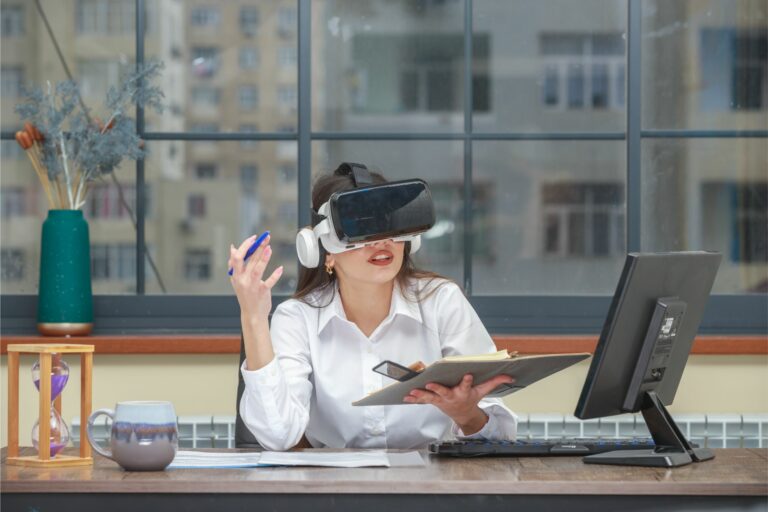Introduction
Welcome to a world where reality and imagination merge, where you can step into alternate dimensions and embark on extraordinary adventures without leaving your living room. Virtual Reality (VR) technology has taken giant leaps forward, transporting us to the next level of reality. In this article, we will delve into the captivating world of VR and explore its future possibilities. Prepare to be amazed as we uncover the boundless potential of The Next Level of Reality: Exploring the Future of VR Technology.
The Fascinating Origins of VR
Before we dive into the future, let’s take a moment to appreciate the roots of VR technology. The concept of immersing oneself in a virtual environment has been a long-standing dream for humans. The idea can be traced back to the 1960s, when Ivan Sutherland, a pioneer in computer graphics, introduced the concept of a head-mounted display (HMD) and created the first VR headset. Since then, numerous advancements have paved the way for the VR experiences we enjoy today.
The Current State of VR Technology
VR has come a long way since its humble beginnings. Modern VR headsets, such as the Oculus Rift, HTC Vive, and PlayStation VR, offer an unprecedented level of immersion and interactivity. These headsets, coupled with powerful gaming PCs or consoles, allow users to step into virtual worlds that are indistinguishable from reality. From exploring ancient ruins to battling virtual foes, the possibilities are virtually endless.
The Next Level of Reality: Exploring the Future of VR Technology
1. Artificial Intelligence in VR
One of the most exciting prospects for the future of VR is the integration of artificial intelligence (AI). AI algorithms have the potential to enhance the realism and interactivity of virtual environments. Imagine having intelligent NPCs (non-player characters) that can engage in meaningful conversations, adapt to your actions, and provide realistic responses. AI-driven VR experiences will blur the line between virtual and real, creating immersive worlds that feel truly alive.
2. Haptic Feedback and Sensory Integration
To take VR to the next level, developers are focusing on incorporating haptic feedback and sensory integration into VR systems. Haptic feedback technology allows users to feel realistic sensations through vibrations or touch feedback. Combined with sensory integration, which engages multiple senses simultaneously, VR experiences can become incredibly immersive. From feeling the gentle breeze on your face to experiencing the rumble of an earthquake, the future of VR will be a multisensory extravaganza.
3. Augmented Reality and Mixed Reality
While VR primarily immerses users in virtual worlds, the future holds great potential for the convergence of VR with augmented reality (AR) and mixed reality (MR). AR overlays virtual elements onto the real world, enhancing our perception of reality. MR, on the other hand, seamlessly blends virtual and real elements, allowing users to interact with both. Imagine a future where you can transform your living room into a virtual battlefield or have virtual companions walking beside you on your morning jog. The possibilities are mind-boggling.
4. Medical Applications of VR
VR is not limited to the realm of gaming and entertainment. It is increasingly being used in various fields, including medicine. Surgeons can now practice complex procedures in a risk-free virtual environment, enhancing their skills and minimizing the chances of errors during real surgeries. Virtual reality (VR) is employed for pain management, rehabilitation, and the treatment of mental health conditions as well. The future will witness further advancements in medical applications, revolutionizing healthcare as we know it.
5. Virtual Tourism and Remote Collaboration
With VR technology, you can travel to exotic destinations without leaving your home. Virtual tourism allows users to explore famous landmarks, visit museums, and even dive into the depths of the ocean, all from the comfort of their VR headset. Additionally, VR enables remote collaboration, bridging the gap between colleagues and friends separated by physical distance. Virtual meetings, conferences, and social gatherings will become more immersive and engaging, transforming the way we interact.
6. Ethical Considerations and Social Impact
As VR technology continues to evolve, it is essential to address the ethical considerations and potential social impact. VR can create powerful experiences that blur the boundaries between real and virtual, raising questions about the consequences of prolonged exposure to simulated environments. Additionally, issues such as data privacy, content regulation, and addiction need to be carefully examined. The future of VR lies not only in technological advancements but also in responsible and mindful usage.
Frequently Asked Questions (FAQs)
FAQ 1: Is VR only for gaming?
No, VR is not limited to gaming. While gaming is one of the most popular applications of VR, the technology has diverse applications in fields such as education, training, healthcare, and entertainment.
FAQ 2: Can VR cause motion sickness?
Some individuals may experience motion sickness or discomfort while using VR due to the sensory disconnect between visual input and physical movement. However, advancements in VR technology are addressing this issue, and many users can now enjoy VR without experiencing motion sickness.
FAQ 3: Are VR headsets suitable for children?
VR headsets are generally not recommended for children under the age of 13 due to potential adverse effects on their visual development. It is crucial to follow the age guidelines provided by manufacturers and ensure appropriate supervision when children use VR.
FAQ 4: Will VR replace traditional forms of entertainment?
VR is not poised to replace traditional forms of entertainment but rather complement them. It offers unique and immersive experiences that traditional media cannot replicate. However, traditional forms of entertainment will continue to coexist with VR.
FAQ 5: What are the hardware requirements for VR?
The hardware requirements for VR vary depending on the specific VR system. High-end VR experiences often require powerful gaming PCs or consoles, while standalone VR headsets have built-in hardware. It is important to check the recommended specifications before purchasing a VR system.
FAQ 6: How much does VR technology cost?
The cost of VR technology varies depending on the complexity and quality of the system. Entry-level VR headsets can be affordable, starting from a few hundred dollars, while high-end setups can cost several thousand dollars. It is important to research and choose a system that fits your budget and requirements.
Conclusion
The future of VR technology holds immense promise and potential. From AI integration and haptic feedback to the convergence of VR with AR and MR, the next level of reality is set to revolutionize various industries and reshape our daily lives. However, as we venture into this exciting frontier, it is crucial to address ethical considerations and ensure responsible usage. The Next Level of Reality: Exploring the Future of VR Technology is an exhilarating journey into a world where the boundaries between the real and the virtual blur, offering us unparalleled experiences and opportunities.




